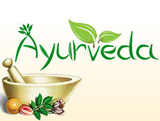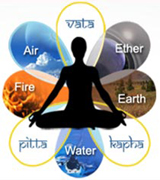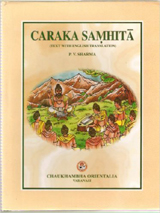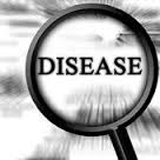Āyurveda
Diagnosis and management of anuktavyādhi (undescribed diseases) through Āyurveda
Editor’s note
The world of diseases is not static. Each generation sees some new diseases added to the old list. The situation poses a new challenge to understanding and treatment. As the morbidity and mortality scales remain high until the new diseases are understood and remedial measures found as happened in the recent instance of swine flu. However, Āyurveda with its farsightedness caters for such unexpected and unexplained diseases. This it can do because it looks at diseases primarily as an inner imbalance. The true remedy therefore is to reset the inner imbalance by strengthening our inner resources and correcting the internal disequilibrium. There is something we can do until we discover the real nature of a new disease and that something may be more than what is needed. It may correct the unexpected breach of equilibrium resulting in a cure. The following article deals with this strategy of Āyurveda in dealing with diseases of an unexplained origin.
Abstract
Āyurvedic classical texts such as Suśrutasaṁhitā, Caraksaṁhitā, Aṣtāñgahṛdaya, etc. were written centuries ago. As time passes, the lifestyles of people along with their eating habits, clothing, daily regimen, etc., all change. The unfavourable changes in the above mentioned factors lead to the cause of diseases, whose clinical picture is entirely different from the diseases mentioned in the ancient texts. Management of such newly originated and undescribed diseases is a great challenge for the physicians of this era. Our ancient ācāryas knew that as time progresses it would lead to new diseases. As such diseases are not mentioned in the ancient classical texts, it is difficult to diagnose and treat them. But the ācāryas gave certain guidelines and principles in the form of trividhabodhyasangraha and the concept of anuktavyādhi to tackle such newly originated clinical conditions. An effort has been made to compile such references along with their commentaries to help to diagnose and treat undescribed diseases.
Diagnosis of newly originated diseases on the basis of trividhabodhyasangraha

The concept of trividhabodhyasangraha is found in Caraksaṁhitā describing that three entities should be taken into consideration for knowing any disease whose description is not available in the classical Āyurvedic texts. The three entities are:
1. Vikārprakṛuti, i.e. the doṣa responsible for the production of the disease;
2. Adhiṣtthān, i.e. the location where the disease is manifested; and
3. Samutthānaviśesa, i.e. the causative factors of the disease.
If a physician is not able to name a particular disease, he should not feel ashamed on that account because it is not always possible to name all types of diseases in definite terms. When aggravated, the same doṣa may cause manifold diseases, depending on the various aetiological factors and the sites of manifestation. So a physician should try to comprehend the nature of the disease, the site of its manifestation and aetiological factors and then initiate treatment. A physician initiating treatment after having full knowledge of the therapeutic properties of these three aspects and paying due regard to scriptural instructions would never fail in his attempt to cure the disease (1).
Cakrapāṇi commentary

Cakrapāṇi, the commentator of Caraksaṁhitā, comments on the above mentioned verse that nomenclature of the disease is not that important in the treatment of the disease (1).
Factors to be examined for newly originated diseases

The physician who minutely examines and determines the condition of dūṣyas, deśa, bala, kāla, anala, prakṛti, vaya, sattva, sātmya, āhāra and avasthā and then decides what are the aggravated doṣas and the appropriate treatment, always attains success and does not go wrong in his treatment (2).
Anuktavyādhi: undescribed diseases in Āyurveda

Cakrapāṇi commentary

There are several other diseases not described in this section of Āyurvedic text with names and forms. Even such diseases are to be treated on the lines suggested in the texts after examining the doṣas and such other factors involved in their manifestation (3).
The other factors refer to bheṣaja (therapeutic measures), deśa (location), kāla (time), bala (strength), śarīra (physical features), āhāra (diet), sātmya (wholesomeness), sattva (mental attitude), prakṛti (constitution) and vaya (age) which are elaborated in sūtrasthāna 15/5.
Treatment protocol for undescribed diseases

Therapies which are opposite to the properties of the doṣas, dūṣyas and aetiological factors involved in the causation of the disease are certainly useful in curing it. If appropriately used, such therapeutic measures will cure all the diseases, whether they are named or not in the text (4).
Diseases are caused both by the aggravation and diminution of doṣas as well as dhātus. If these elements are diminished in quantity, then for their augmentation, therapeutic measures similar in property are to be given. Thus, these are to be treated as of an opposite nature (viruddha). In such conditions, therapeutic measures which are opposed to the doṣas are not to be given, but those which are opposed to the diminution of doṣas are to be administered (5).
Cakrapāṇi commentary: definition of anuktavyādhi

Cakrapāṇi defines anuktavyādhi as diseases whose nomenclature, sign and symptoms are not described in ancient Āyurvedic texts such as Caraksaṁhitā.

Cakrapāṇi commentary
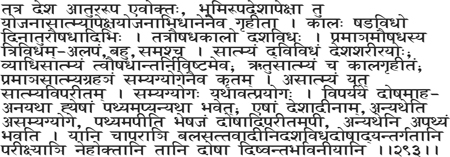
Cakrapāṇi says that the following points should also be taken into consideration before initiating the treatment of such diseases:
1. Deśa (place where the patient is)
2. Kāla (season)
3. Auṣadhakāla (medicine administration time)
4. Auṣadhapramāṇa (quantity of the medicine)
5. Sātmya (suitable for patient, etc.)
If all these points are taken into consideration, the physician will not commit any mistake and will successfully cure the disease.

Treatment suggested as per the location of the doṣas
Sr. No. |
Location of doṣa |
Treatment |
1 |
Āmāśaya (stomach) | Vamana (medicated emesis) |
2 |
Śira (head) | Nāsya(nasal instillation of medicines) |
3 |
Pakvāśaya | Virecana(medicated purgation)/ basti (medicated enema) |
Conclusion
1. Unfavourable changes in lifestyle along with food habits and daily regimen lead to diseases.
2. As time passes, the changes in climatic conditions are also responsible for the cause of new diseases.
3. It is not possible to find each and every disease in the classical texts along with their names.
4. One should not be ashamed if he/she does not know the name of the disease as the disease is newly originated.
5. Such diseases should be diagnosed on the basis of vikārprakṛti, adhiṣṭhāna and samutthāna, i.e trividhabodhyasangraha.
6. Besides trividhabodhyasangraha, one should also make an effort to understand other factors like duṣya, deśa, bala, kāla, etc. about the patient and the disease.
7. A physician who takes into consideration the above-mentioned factors before initiating treatment never commits any mistake in treatment and achieves success in his field.
References
1. (eds.)Sharma RK, Dash B. Caraksaṁhitā. Text with English translation and critical exposition. Vol. I. Varanasi:Chaukhambha Sanskrit Series Office; 2009, p. 345-6.
2. (ed.)Murthy SrikanthaKR. Vagbhat’s Aṣtāñga-hṛdayam with English translation, Vol I. 9th ed. Varanasi: Chowkhambha Krishnadas Academy; 2013, p. 179.
3. (eds.) Sharma, RK, Dash B. Caraksaṁhitā. Text with English translation and critical exposition. Vol. V. Varanasi: Chaukhambha Sanskrit Series Office; 2009, p. 200.
4. Ibid., p.201.
5. Ibid.
Glossary of Āyurvedic terms
Adhiṣthāna — place, base, position
Āhāra — food, diet
Anukta — unuttered, unsaid
Āmāśaya — stomach
Asātmya — unwholesome
Auṣadha — medicine
Avasthā — state, condition, situation
Bala — strength, stamina
Bodhya — factors to be known or understood
Cikitsā — treatment, therapy
Deśa — country, region
Dhātu — tissues, the seven dhātus mentioned in Āyurveda
Dhātuagni — tissue agnis; there are seven, one for each of the major tissues of the body.
Doṣa — three main forces which govern the body (vāta, pitta and kapha); literally means faulty or to cause harm, although they only do so when they are functioning abnormally. When functioning normally, they maintain good health of the body and guide all normal bodily functions
Duṣya — termed for dhātus which are vitiated by doṣa.
Guru — heavy
Jaṭharāgni — the digestive fire; the most important of all the agnis. Also called kāyagni (bodily fire) and antaragni (internal fire).
Jīrṇa — old (jīrṇaśālīanna– old rice)
Kāla — season, era, time
Kapha — one of the three doṣas in the body. The force behind the structure and stability of the body; the elements are water and earth; its qualities are heavy, cold, moist, static, smooth and soft; its root is in the upper stomach. Also a term for mucous.
Kaṣṭasādhya — to be treated with difficulty, to be accomplished with difficulty
Nāsya — a pañcakarma treatment. Nasal instillation of medicines.
Nidāna — causative factors
Niruha — enema of decoction. Also known as Asthāpanavasti. One of the pañcakarma treatments.
Pañcakarma — five types of therapies
Pakvāśaya — intestines
Pathya — digestible, wholesome, suitable
Pramāṇa — dosage
Prakṛti — nature, constitution
Prakopa — vitiation of doṣa. Prakopa is described as second stage in the pathogenesis of any disease.
Rasadhātu — one of the seven dhātus or tissues; consists of all bodily fluids (plasma, lymph, chyle, breast milk, menses). In the subtle body, provides a sense of satisfaction.
Rasāyana — medicines supposed to prevent old age and promote a long healthy life.
Rasavahasrotas — the channel through which āhārarasa flows; originates in the heart and blood vessels and includes lymphatic vessels; primary carrier of kaphadoṣa.
Ṛitusandhi — junction of two seasons, transition of one season to the next.
Samutthāna — origin, cause
Sātmya — constitution, habituation, whole-someness
Sattva — mental attitude
Sahaja — congenital factor for disease
Sangraha — collection
Śarīra — body, physical features
Śamana — pacifying, allaying
Śodhana — purification or cleansing procedures
Srotas — channels in the body; some are gross and some are subtle. In some texts,srota is used synonymously with nadī. The ears are also called srotas.
Sthānasaṁśraya — accumulation of vitiated doṣas in a susceptible channel of the body.
Srotarodha — obstruction of channels
Sanga — obstruction
Sūtrasthāna — first general section of treatment
Trividha — threefold
Vamana — medical emesis or medical vomiting used to treat kapha disorders. A pañcakarma treatment.
Vāta — one of the three doṣas. The force within the body responsible for all motion; its elements are air and ether; its qualities are light, cold, dry, mobile, subtle and rough; its root is the large intestine.
Vātānulomana — forcing vāta (doṣa) in the right direction or downward
Vastī — medicated enema. A pañcakarma therapy to treat vata disorders.
Vaya — age
Vāyu — one of the three doṣas. The force within the body responsible for all motion; its elements are air and ether; its qualities are light, cold, dry, mobile, subtle and rough; its root is the large intestine.
Vidahi — causing burning sensation, causing pitta elevation.
Vihāra — routine and regimen
Virecana — controlled purgation. A pañcakarma treatment to treat pitta disorders.
Viruddha — opposite
Viśeṣa — specific
Vṛddhi — increase
Vyādhi — illness, sickness, disease
Dr. Ritesh Gujarathi is Associate Professor at Dept. of Basic Principles; Dr. Jasmine Gujarathi is Associate Professor at Dept. of Prasuti Tantra and Stri Roga, G. J. Patel Institute of Ayurvedic Studies and Research, New Vallabh Vidyanagar, Anand, Gujarat.
Share with us (Comments,contributions,opinions)
When reproducing this feature, please credit NAMAH,and give the byline. Please send us cuttings.

